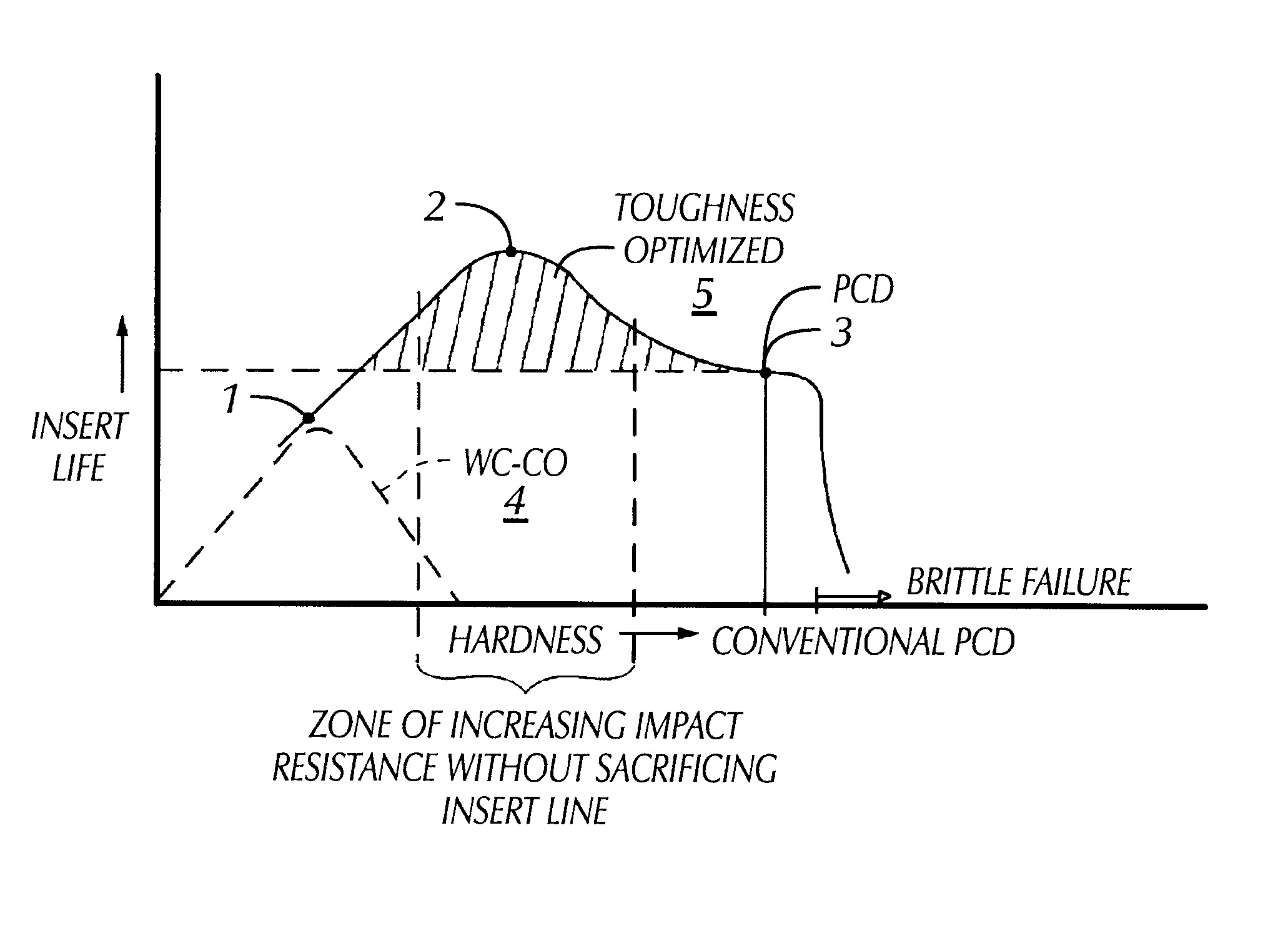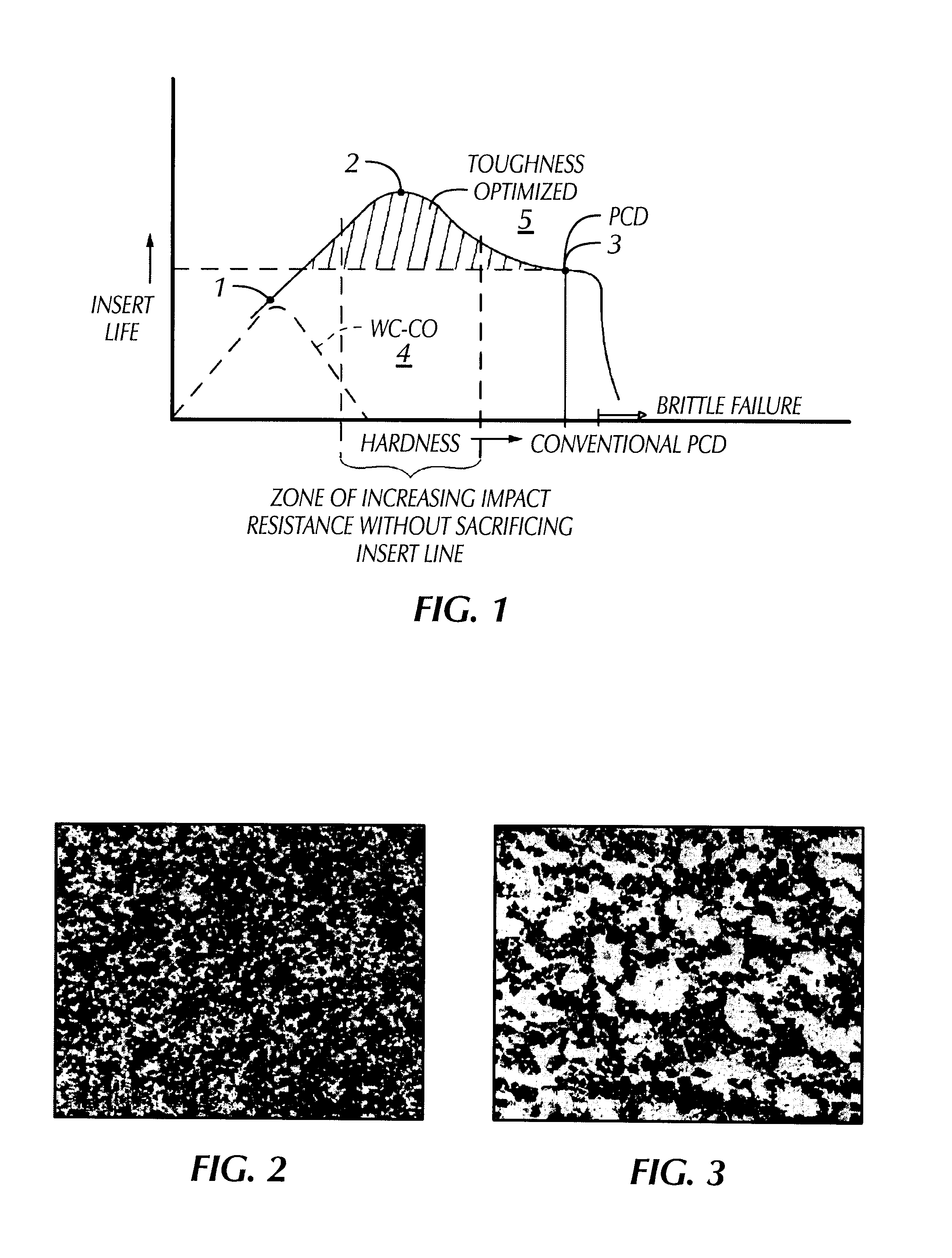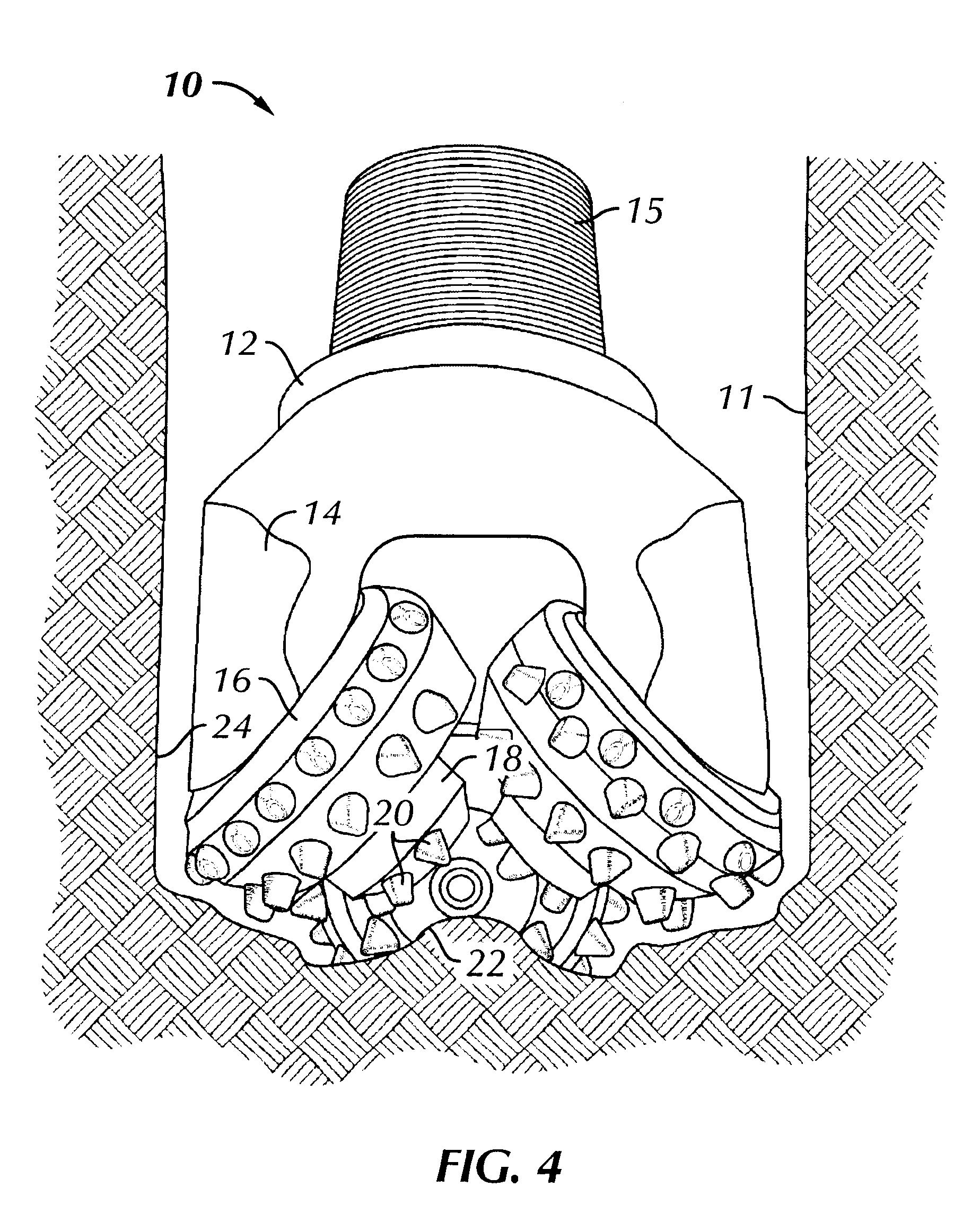Toughness optimized insert for rock and hammer bits
a technology of tungsten carbide inserts and toughness, applied in the field of cutting elements, can solve the problems of excessive wear of softer, tougher tungsten carbide inserts, and the hard pcd layer of pcd enhanced inserts, and achieve the effect of reducing the risk of pcd chipping and spalling, and reducing the wear resistance of softer, tougher inserts
- Summary
- Abstract
- Description
- Claims
- Application Information
AI Technical Summary
Problems solved by technology
Method used
Image
Examples
Embodiment Construction
In an example of a composite PCD material made according to the invention, 60% by volume of diamond and 40% by volume of precemented tungsten carbide powder were combined and sintered. The average diamond grain size was about 6 microns and the average precemented tungsten carbide grain size was about 20 microns. The resulting hardness of the composite PCD material was 2300 HV. The relative improvement in impact resistance as compared to conventional PCD was about 100%, with the drop height increasing from about 45 inches for a conventional PCD enhanced insert to about 97 inches for an composite PCD enhanced insert according to the example.
FIGS. 8 and 8A illustrate an embodiment of a hammer bit having inserts made according to the invention. The hammer bit 110 has a body 112 with a head 114 at one end thereof. The body 112 is received in a hammer (not shown), and the hammer moves the head 114 against the formation to fracture the formation. Inserts 120 are mounted in the head 114. Th...
PUM
| Property | Measurement | Unit |
|---|---|---|
| grain size | aaaaa | aaaaa |
| grain size | aaaaa | aaaaa |
| hardness | aaaaa | aaaaa |
Abstract
Description
Claims
Application Information
 Login to View More
Login to View More - R&D
- Intellectual Property
- Life Sciences
- Materials
- Tech Scout
- Unparalleled Data Quality
- Higher Quality Content
- 60% Fewer Hallucinations
Browse by: Latest US Patents, China's latest patents, Technical Efficacy Thesaurus, Application Domain, Technology Topic, Popular Technical Reports.
© 2025 PatSnap. All rights reserved.Legal|Privacy policy|Modern Slavery Act Transparency Statement|Sitemap|About US| Contact US: help@patsnap.com



